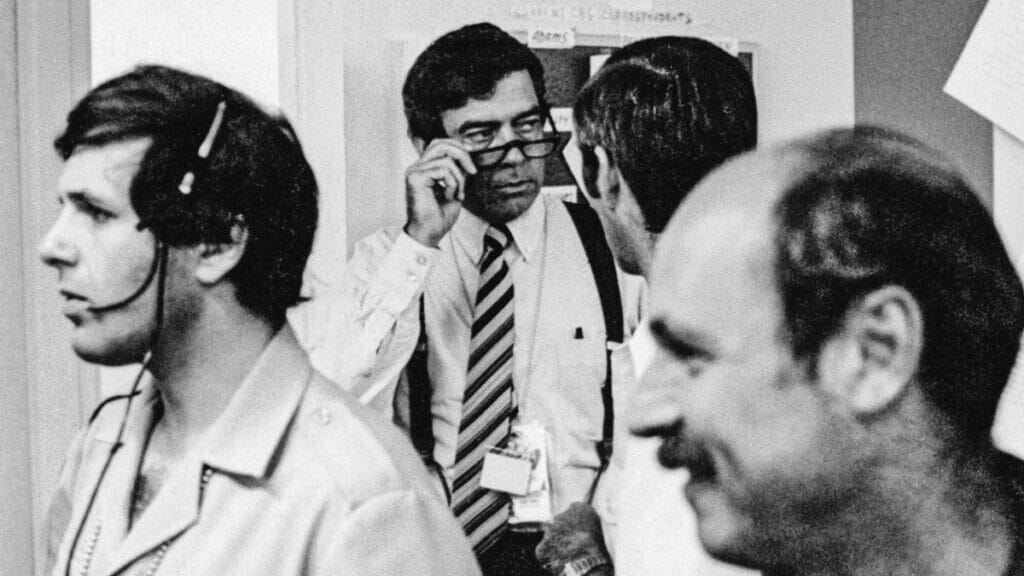Read also:
How to Watch FX Live Without CableHow To Watch AMC Without CableHow to Watch ABC Without CableHow to Watch Paramount Network Without CableFrank Marshall’s documentary on the legendary newsman too often goes softer than the anchorman ever would.
This review is part of our coverage of the 2023 Tribeca Film Festival.
Since its inception, the Tribeca Film Festival has always served almost as much of a celebration of celebrity as it is a celebration of cinema. That is especially true in regards to the documentary programming, which has always favored films about the life and work of famous people. That’s especially the case when there’s a chance a high-profile red-carpet premiere might lure such names into showing up. For instance, among the titles in this year’s lineup is Rather, Frank Marshall’s look at the legendary and controversial newsman Dan Rather.
As Marshall’s film reveals, Rather was essentially the Forrest Gump of broadcast journalism. For years, he consistently covered an astonishing array of stories. After starting off as a radio broadcaster in Houston in the mid-50s, he first attracted national notice in 1961. His coverage of Hurricane Carla for a CBS affiliate, including the first use of radar imagery on television, made headlines. In its wake, the network brought him to New York for a trial period.

While that didn’t pan out, his exile placed him in Texas in time to cover the assassination of John F. Kennedy and its immediate consequences. That secured his career for good. Over the next several decades, he would be at the forefront of nearly all the big stories during that period. He covered the Civil Rights Movement, the Vietnam War, Watergate, the Soviet invasion of Afghanistan, and Iran-Contra, to name just a few.
During that time, Rather often found himself to be a target for criticism. Many accused him of disguising a liberal bias in his hard-hitting reporting. Not even getting punched in the stomach while reporting from the floor of the 1968 Democratic convention did much to dispel this notion. Rather’s decision to report on the Afghanistan conflict from the front lines in mujahideen garb earned him plenty of mockery, including a series of brutally funny Doonesbury strips. He infamously stormed off the set of the CBS Evening News after being informed it would start late due to a tennis game, leaving the network with six minutes of dead air. It was an incident George H.W. Bush, in the midst of a contentious interview, threw back at the anchorman in a not-so-spontaneous ad-lib.
[F]or the most part, Rather is an admirable portrait of a more-than-admirable man and his work.
Speaking of the 43rd President of the United States, Bush also became the catalyst for Rather’s biggest controversy. In 2004, Rather reported on a series of documents that called George W. Bush’s National Guard service into question. Known as the Killian documents, these papers steadily became an object of fascination, with several questioning their authenticity. The backlash was swift and deafening. No amount of retractions or apologies proved capable of stemming it. Within months, with the story never definitively verified or proven false, Rather announced that he would be leaving CBS.
Marshall recounts Rather’s story with the usual array of copious archival footage. He includes a few curios, such as a goofy clip of Rather joining R.E.M. for a rendition of “What’s The Frequency, Kenneth?” The song, off the band’s “Monster” album, was inspired by a bizarre 1986 incident. During it, Rather was attacked on the street by a mysterious assailant who repeatedly shouted those titular words. He also utilizes talking head interviews with such figures as Ronan Farrow, Samantha Bee, and Mark Cuban—who hired Rather in 2006 for his AXS network—and commentary from Rather himself. The results are entertaining enough. Still, considering Rather was famous for his hard-hitting and no-nonsense approach to reporting, Marshall’s comparatively softball approach is sometimes disconcerting. This is especially evident in the segment covering the Killian documents controversy.
Nonetheless, for the most part, Rather is an admirable portrait of a more-than-admirable man and his work. It also serves as a poignant observation of broadcast journalism’s evolution and subsequent devolution over the last few decades.